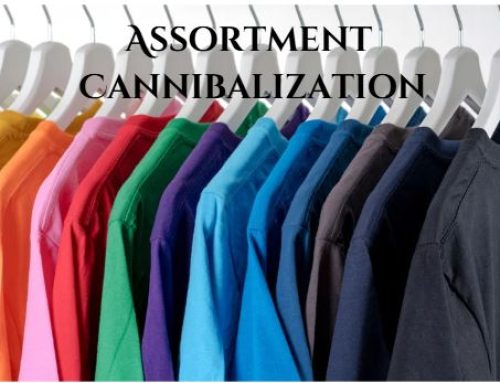The tried and trusted tool for assortment planning for buyers and planners everywhere has long been Excel spreadsheets. They’re cheap, and malleable, and they get the job done.
But are spreadsheets the best tools for the job of fashion assortment planning? No.
You can cut your hair with Kitchen scissors but is that the best haircut? NO
Kitchen Scissors to Professional Tools.
What is it that Buyers and planners need that spreadsheets can’t offer?
Buy tailoring and layering.
The more closely a buyer can match product assortments to the omnichannel, the better their category will perform. Buy tailoring or clustering allows a buyer to select which groups of stores or channels a product is suitable for and quickly calculate how many units are needed to satisfy that need. Having the ability to cluster by retail stores or market using multiple dimensions of customer demand gives you control that you can’t get with a spreadsheet.
Integration with other systems.
Buyers waste incredible time transposing information from one place to another. A purpose-built assortment planning software solution can connect with all of your other systems and put the information a buyer needs in one place. Historical sales data, merchandise plans, design, and purchase orders can all come together in one place.
See also: How your IT team can benefit from a BMS
Instant reports.
Spreadsheets are notorious for being very slow to consolidate and update. Professional assortment planning software puts your data in a central database and makes retail analytics instantaneous. Managers, planners, buyers, and allocators can all get instant access to the latest information with the click of a button.
Visual storyboards.
Trying to work with images in spreadsheets is like trying to ride a Zebra to work. It’s possible, but it’s guaranteed to look weird and be way more trouble than it’s worth. Retail Assortment planning software gives you access to storyboards and visual information right within the buy plan.
Better collaboration.
When everyone is working in the same database, information is much easier to share. Managers can get instant roll-ups, and cross-functional team members can see what everyone is doing without having to wait for reports or meetings. And assortment planning software can help keep large teams on the same page in ways spreadsheets fail.
Fewer errors.
Spreadsheets break, formulas get overridden, and the user can very easily manipulate data. And don’t forget typos when data is transcribed. But with a software solution, you can make these kinds of errors a thing of the past. No transcribing data means no typos. And a consistent set of calculations ensures you have a single version of the truth.
See also: Our survey results in Confessions of a Retail Buyer
Faster lead times.
Assortment planning software can improve team productivity by as much as 25%. Instead of spending time struggling with data entry, your team can focus on getting the buy right. The team is faster and more nimble, reducing the buying decision-making process and lead time.
Higher margins.
Better matching buy quantities to customer demand and open to buy makes allocation a much easier job. Having the right amount of inventory to allocate reduces over-stocks and under-stocks, and has an immediate positive effect on gross margins, and reduces unnecessary markdowns.
Spreadsheets may be fine for small mom-and-pop businesses, but at an enterprise level, you need to have the right tools to do the best possible job. If you’re still battling with spreadsheets, it’s time to upgrade to a purpose-built assortment planning solution.
Learn How one daVinci customer improved their team productivity





















